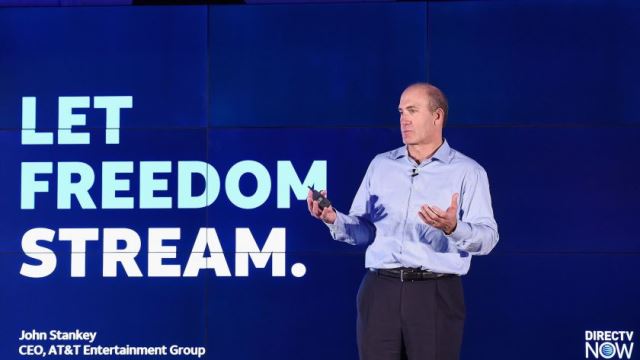AT&T CEO John Stankey has reversed some of the main decisions of former boss Randall Stephenson, according to media reports.
 AT&T announced it decided to spin off WarnerMedia, merging it with Discovery to form a new media and entertainment company likely worth well over $100 billion.
AT&T announced it decided to spin off WarnerMedia, merging it with Discovery to form a new media and entertainment company likely worth well over $100 billion.
AT&T’s decision to divest WarnerMedia comes less than three years after closing its $100 billion transaction, including debt, is an admission that putting a large content asset with a wireless phone company had few long-lasting synergies, CNBC reported.
AT&T CEO John Stankey also sold a 30 percent stake in DirecTV and other linear pay-TV assets in February, along with operational control, to TPG. That deal also partially unwound a major AT&T acquisition from just a few years earlier. AT&T spent $67.1 billion, including debt, on DirecTV in 2015.
John Stankey had defended the DirecTV and the Time Warner acquisitions in the past.
Randall Stephenson said in 2016: “The world of distribution and content is converging, and we need to move fast, and if we want to do something truly unique, begin to curate content differently, begin to format content different for these mobile environments — this is all about mobility.”
“Think DirecTV Now, the new product we’re bringing to market. What can you do with Time Warner content really fast and very uniquely for our customers? Can you begin to integrate social into that content? Can you give the capability to … I’m watching content, I want to clip it, I want to send it via social media to my friends. Can we iterate on that quickly, and can we give a unique experience to our customers?”
Media companies have realized that linear pay-TV is a dying business. That’s why Stankey partially unloaded DirecTV, a linear pay-TV distribution business.
Media companies have attempted to counteract the loss of pay-TV subscribers with direct-to-consumer services that allow users to pay for access to content without subscribing to cable. This has turned entertainment giants into distribution platforms, themselves, a la Netflix.
After running WarnerMedia for about two years, Stankey clearly concluded AT&T was at best not necessary as an owner of media assets and at worse holding the wireless company and the media business back.
“My job as the CEO of AT&T is to turn out to the employee body, who all have good ideas on how to grow this business and where to take it, and make sure I facilitate those opportunities,” Stankey told reporters Monday.
“Looking out over the next couple years on these great growth opportunities we have at AT&T, whether it’s fixed broadband, what we do in wireless and what we can do in growing the media business, it became clear to me that we were going to need a different capital structure to get that done. It was important that I not do something in my decision-making that caused anyone to slow down in their execution.”
Stankey went on to acknowledge that instead of supercharging WarnerMedia, as Stephenson had hoped, AT&T was actually holding WarnerMedia back.
Elliott’s influence
Elliott Management, which took a stake in AT&T, had questioned some of the deals of AT&T. Elliott put pressure on Stephenson to leave AT&T.
“It has been a transformational year at AT&T since John Stankey took over as CEO, and today’s announcement represents another impressive step in the company’s recent evolution,” Elliott said in a statement.
“AT&T has now executed on its promise to streamline operations and re-focus on its core businesses, all while improving operational execution, enhancing its financial position and advancing its corporate governance. As investors, Elliott supports AT&T in its efforts to best position the company for future success.”
AT&T’s $43 billion deal to spin out its WarnerMedia business and combine it with Discovery adds Discovery’s 15 million subscribers to the 64 million subscribers that WarnerMedia’s HBO Max has globally, Reuters reported.
The bigger scale of the combined company gives it a fighting chance against Netflix and Walt Disney, which have 207.6 million and 103.6 million subscribers, respectively.
The deal leaves the remaining streaming players — notably ViacomCBS and Comcast’s NBCUniversal — vulnerable.
ViacomCBS reaches about 36 million people through its streaming platforms. NBCUniversal does not report total subscribers for its Peacock service.





